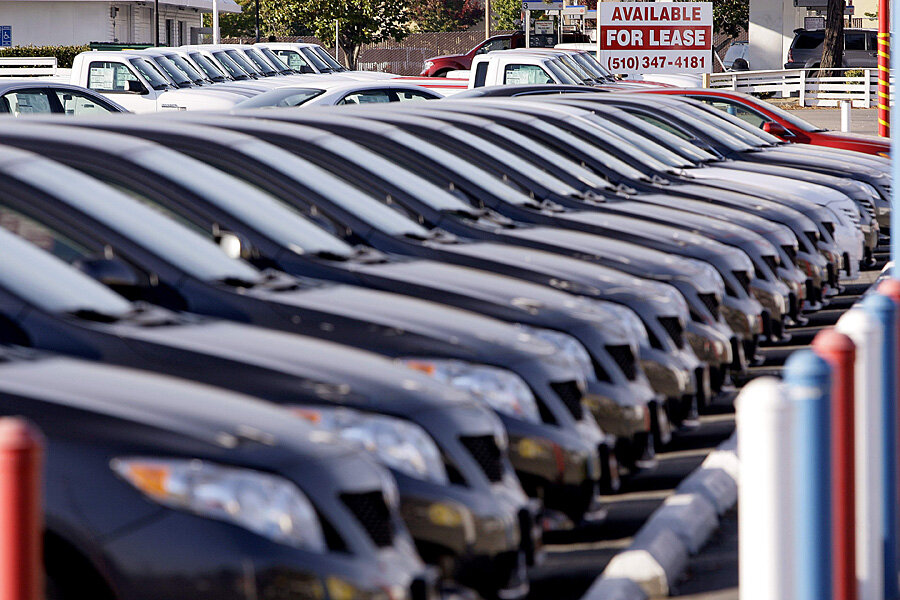Subprime auto loans: boon or bane?
Loading...
For consumers down on their luck with a checkered borrowing history and who need a car, subprime auto loans sound promising: they’re easy to get even for people who have a low credit score, are recovering from bankruptcy or lack a steady income.
Since they go to borrowers whose credit scores are often too low to qualify for a standard loan, these notes carry higher costs for consumers and greater risk for lenders. Subprime auto loans have become controversial recently as their increasing popularity has led to comparisons with the poor quality home mortgages that led to the 2007-2009 financial crisis and the recession that resulted. Here’s a look at how these loans work, what they can mean for consumers and how they could hurt the economy.
Subprime auto loans explained
Financial institutions give subprime auto loans to individuals with credit scores of 640 or under, according to Equifax, the credit reporting company. Because borrowers with poor credit are riskier for lenders, banks charge much higher interest rates, often in the 20% range, compared with less than 5% for those with good rankings. The difference can amount to hundreds of dollars a month, depending on the size of the debt.
Subprime lending accounts for about 32% of all car loans made today and they have balances outstanding of $46 billion, an eight-year high, Equifax says. Partly, the increase is driven by market forces unrelated to consumer needs.
As investors search for better returns, demand is rising for bundles of high-yield subprime auto loans, despite their elevated default risk compared with other types of debt, Bloomberg News reported in June. It cited last year’s sales of about $17.6 billion in securities created from the loans, more than double the amount in 2010. Moody’s Investors Service said in January that losses on the asset-backed debt were rising as lenders loosened standards further to generate more loans and satisfy the market’s growing appetite.
While rates for the loans are higher, they may be the only way for many buyers to get financing for a vehicle they need to get to work or for other purposes. Some unscrupulous dealers use the availability of subprime financing to help make sales, even if it can mean locking a low-income borrower into a nightmare of missed payments, collections agencies and repo men snagging the car in the middle of the night, theNew York Times reported in July. Increased availability of credit for high-risk applicants has also fueled new car sales, as about a third were financed by borrowers with credit scores of less than 700 last year, Fortune magazine said in November. New vehicle sales are projected to reach 16.3 million units this year, the most since 2006, according to Bloomberg News.
Standards loosened
The standards for subprime auto loans have gotten so relaxed that banks and other lenders have been giving them out left and right. Here are a few of the main reasons for the easy credit policies:
Collateral – A car loan is secured by the vehicle, which can be repossessed and sold to recoup some of the debt, so some lenders are more willing to take the risk of giving loans to people with low credit rankings. New technology even makes it possible for a bank or finance company to disable the car remotely if a payment is missed.
Secondary debt sales – The growing market for subprime auto loans bundled into asset-backed securities has prompted some lenders to make financing available to borrowers who wouldn’t have qualified even a year earlier because of a poor history of managing obligations. Some predatory finance companies have pushed larger dollar amounts with higher rates, as both boost their earnings while helping to meet demand for the debt. Bond rater Standard & Poor’s said in July that subprime loan delinquencies and losses have risen this year, reflecting the decline in credit standards.
Dodd-Frank exclusion – The 2010 Dodd-Frank financial reform law that created the U.S. Consumer Financial Protection Bureau exempted automobile dealers from the agency’s oversight. This means financing arranged through a car dealer is less regulated than loans obtained directly from banks or credit unions. As a result, it’s easier for lenders working through dealers to take advantage of borrowers.
Proceed with caution
While a subprime loan – even with a 20% interest rate – can help pave the way to a new job and prosperity for some borrowers, the debt can easily lead to financial ruin for others. The average high-risk borrower takes on a car loan that exceeds the value of the vehicle being purchased by 15%, according to S&P, which means a failure to make monthly payments and repossession can still leave the consumer saddled with obligations for a car he no longer has.
While investors snap up bundles of subprime auto loans and analysts fret about a bubble forming like it did with high-risk mortgages before that market collapsed in 2007, the scale is vastly different. Reuters has put the value of assets backed by risky car loans at about $80 billion from 2006 to 2012, while securities underpinned by similarly low-quality mortgages reached 20 times more, at $1.6 trillion from 2006 to 2009.
Still, should there be a meltdown like the one that clubbed the real estate industry seven years ago, automakers could feel a drag on sales and that could put the brakes on the economy’s already slow recovery.







